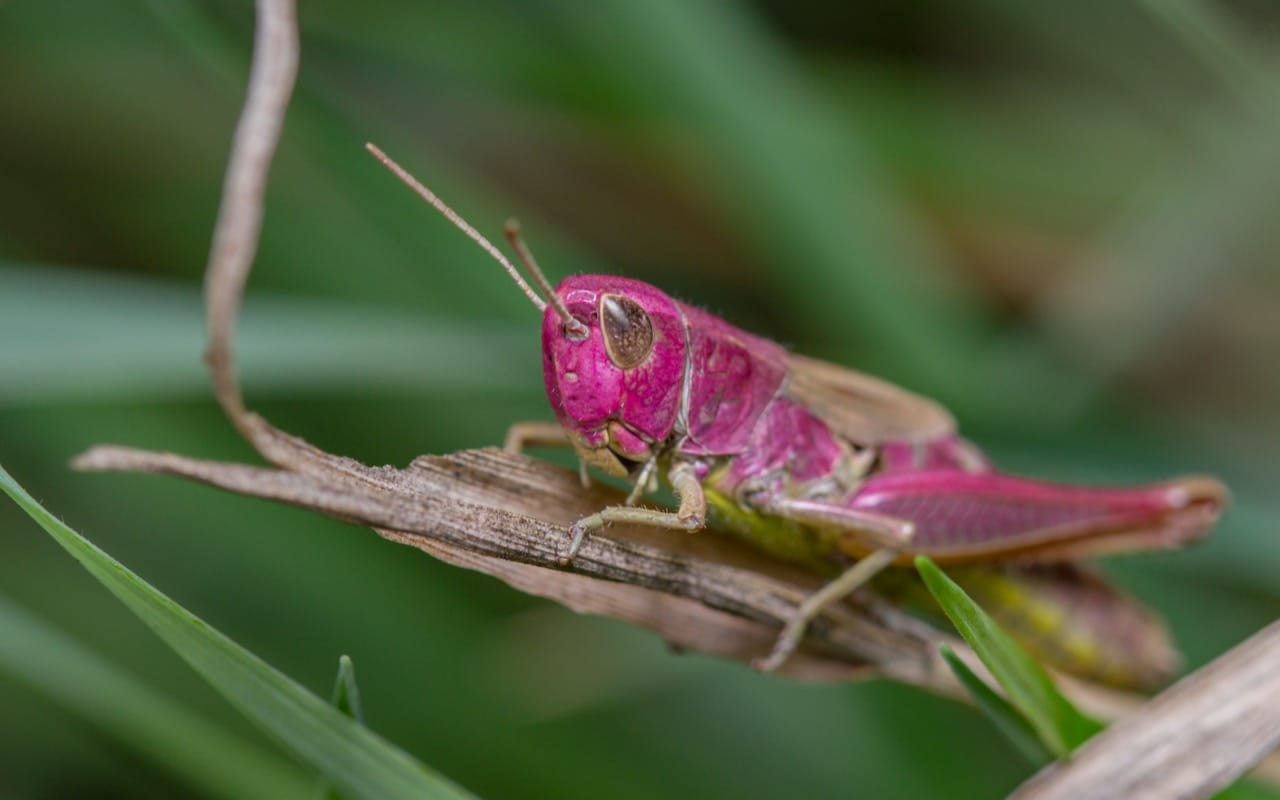In the vast world of insects, the pink grasshopper stands out with its striking color, offering a vivid contrast to the typical greens and browns associated with its kind. This unusual hue is not just a visual marvel but also a gateway into understanding genetic variation and adaptation in the natural world. The pink grasshopper, more than just a curiosity, invites us to explore the intricate dance of genetics, survival, and the environment.
Characteristics / Physical Description
The pink grasshopper owes its remarkable coloration to a genetic mutation known as erythrism, which causes an excessive production of red pigments or an underproduction of normal pigment. This results in varying shades of pink across different individuals, from soft rose to bright magenta. Typically, these grasshoppers share the same physical structure as their more conventionally colored counterparts, featuring long hind legs for jumping, short antennae, and a robust body designed for their active lifestyle.
Taxonomy and Classification
Belonging to the order Orthoptera, which includes crickets and katydids, grasshoppers are primarily classified into two suborders: Caelifera and Ensifera. The pink grasshopper falls under the Caelifera suborder, characterized by their short antennae and predominantly day-active behavior. Within this classification, they are further divided into families and genera based on more specific physical and behavioral traits.
Behavior and Social Structure
Grasshoppers are generally solitary creatures, but they can form large groups or swarms when environmental conditions prompt a change in behavior, leading to mass migration. The pink grasshopper, despite its conspicuous color, exhibits similar behavioral patterns to its green counterparts, engaging in activities such as feeding, mating, and escaping from predators primarily through jumping or flying.
Habitat and Distribution
Grasshoppers are versatile and can inhabit a range of environments from grasslands to forests. The distribution of pink grasshoppers is not well-documented due to their rarity, but they are occasionally spotted in regions where grasshoppers are commonly found, suggesting a widespread but sparse presence across different continents.
Diet and Feeding Habits
Like most grasshoppers, the pink variants are herbivores. They primarily feed on grasses, leaves, and sometimes crops, which can occasionally position them as agricultural pests. Their feeding behavior is crucial for nutrient cycling within their ecosystems, contributing to the decomposition of plant material and influencing the structure of vegetation.
Breeding and Reproduction
Grasshoppers undergo incomplete metamorphosis, meaning they hatch from eggs into nymphs, which resemble smaller versions of the adult but without wings. Through successive molts, nymphs grow into full-sized adults. The pink coloration of a grasshopper can appear at any stage of development, influenced by genetic factors from the moment of egg fertilization.
Relationship with Humans
While often overlooked due to their commonality and perceived as pests, grasshoppers, including the rare pink ones, play significant roles in their ecosystems. They serve as food for a variety of predators and can act as indicators of biodiversity and environmental health. The pink grasshopper, in particular, sparks interest for educational and scientific observation due to its unique appearance.
Evolutionary History
The occurrence of pink grasshoppers and the erythristic mutation provides insights into evolutionary biology and the role of mutations in species adaptation and survival. Such genetic variations can sometimes offer unexpected advantages in certain environments, contributing to the evolutionary success of a species.
Use as Research Animals
Due to their abundance and ease of care, grasshoppers serve as models in various scientific studies, from genetics to environmental science. The pink grasshopper, with its rare mutation, offers a unique perspective on genetic diversity and adaptation, making it a subject of interest for research in evolutionary biology and genetics.
This exploration into the life of the pink grasshopper not only highlights the beauty and diversity of nature but also reminds us of the intricate connections within ecosystems and the ongoing dance of adaptation and survival.

